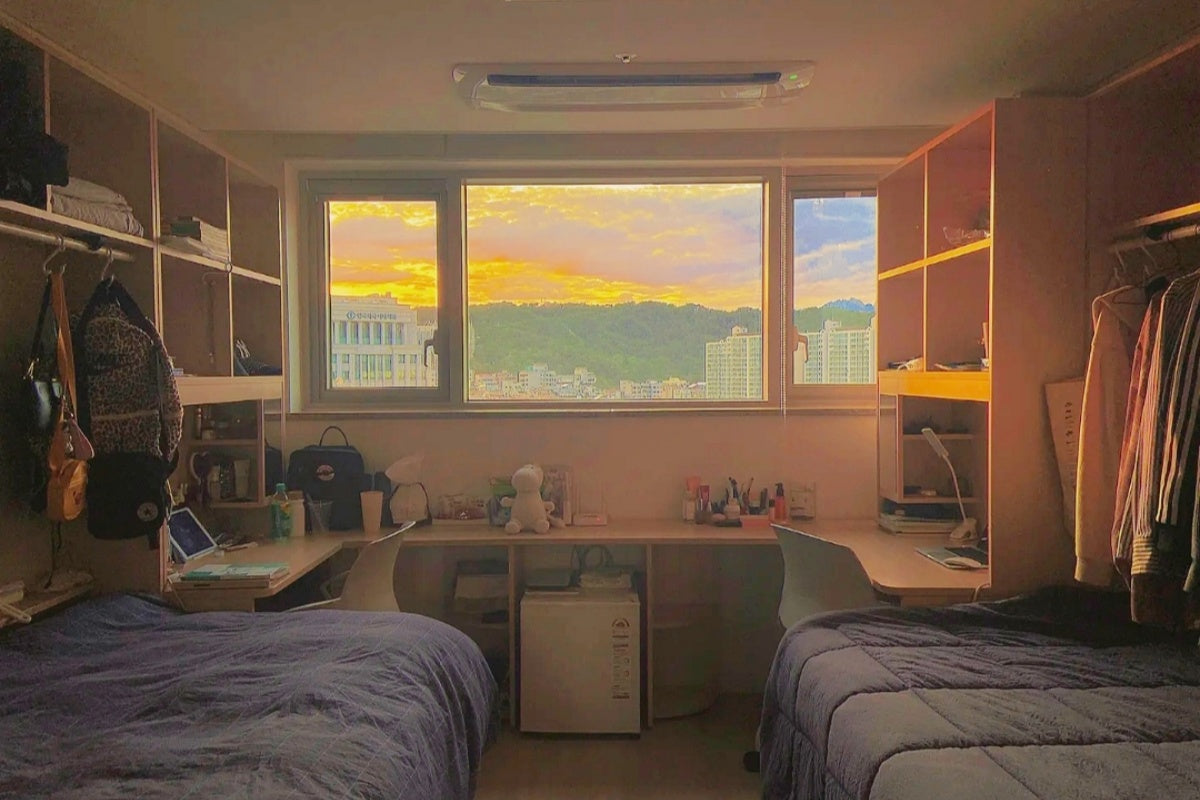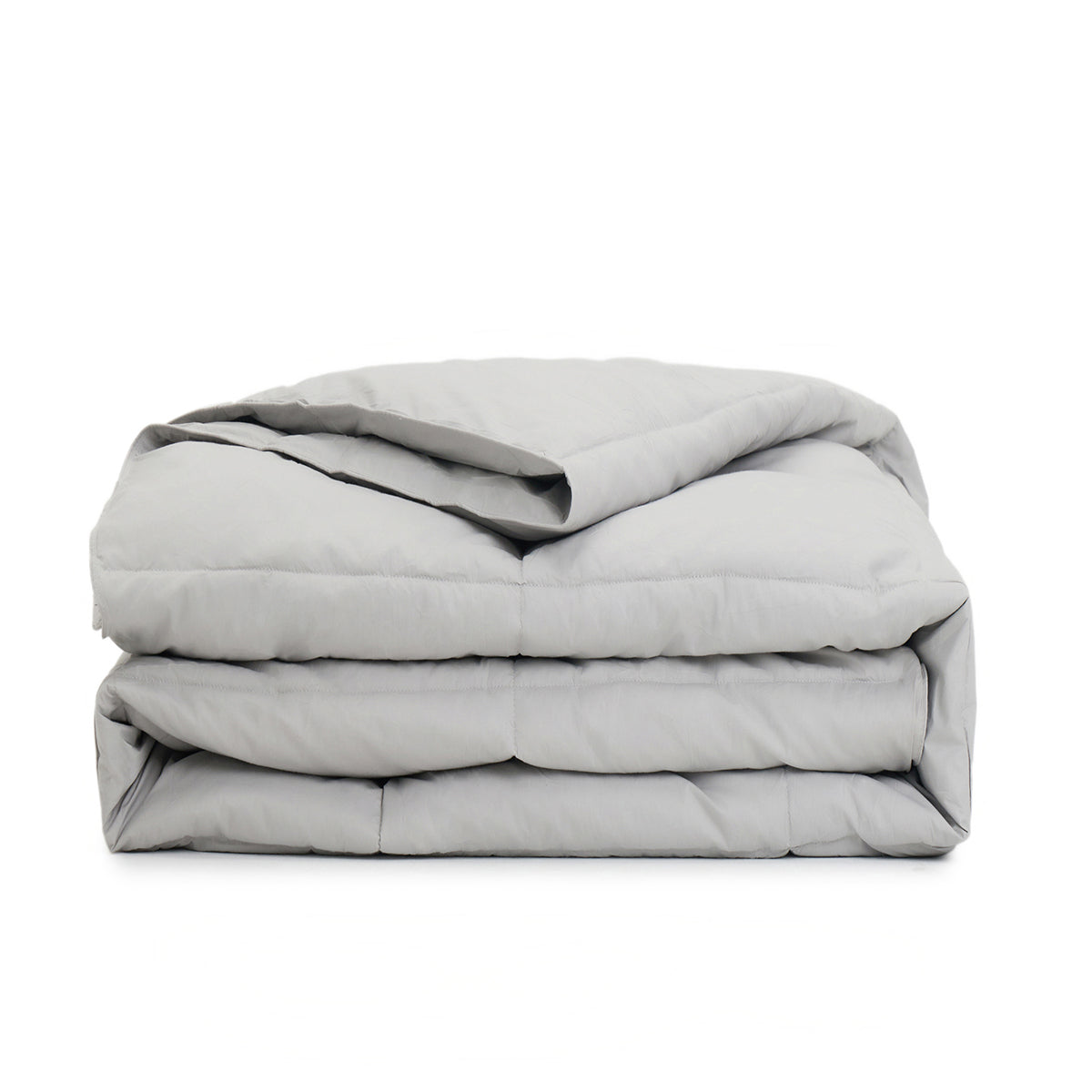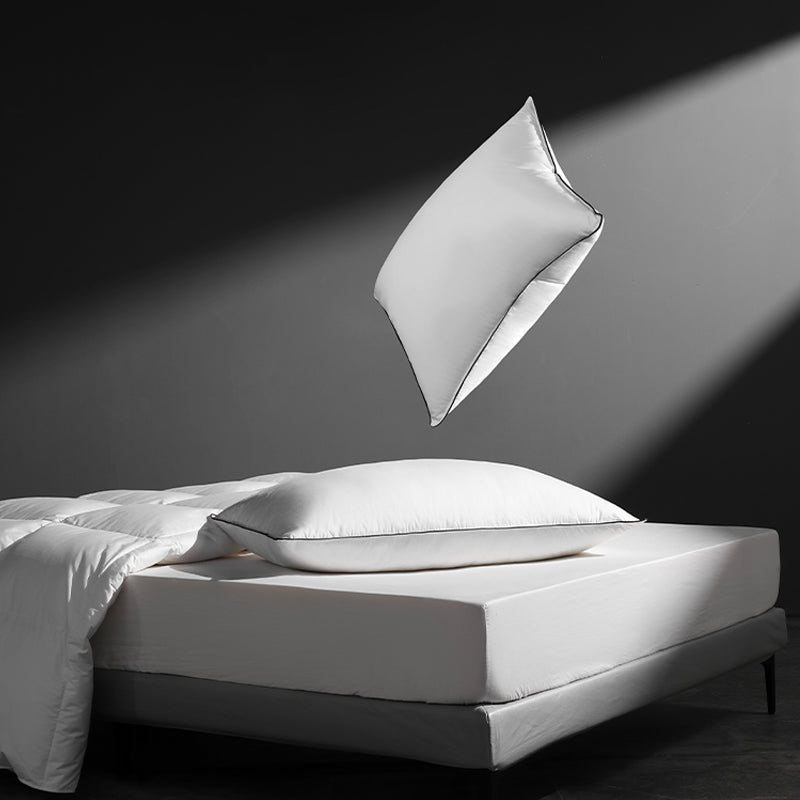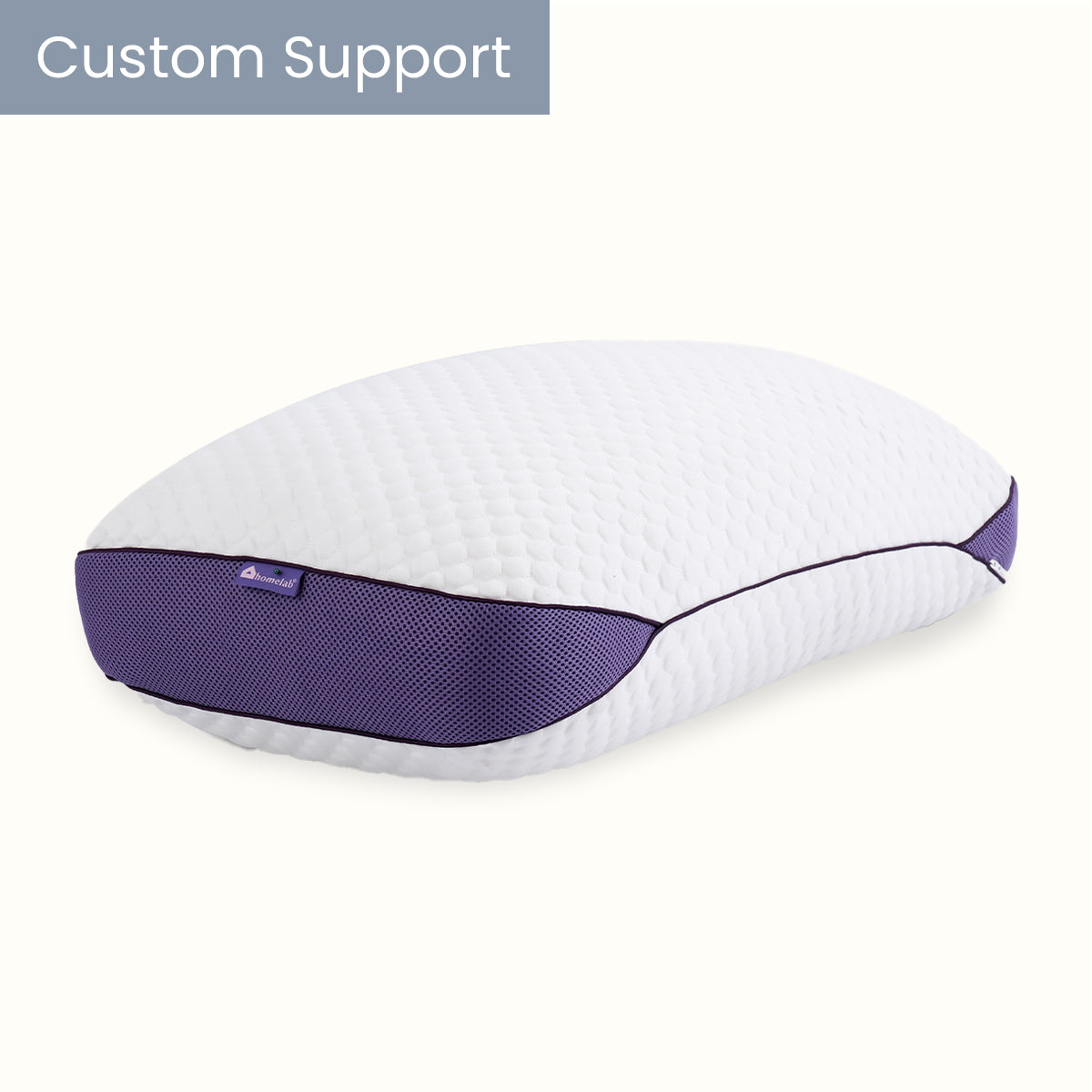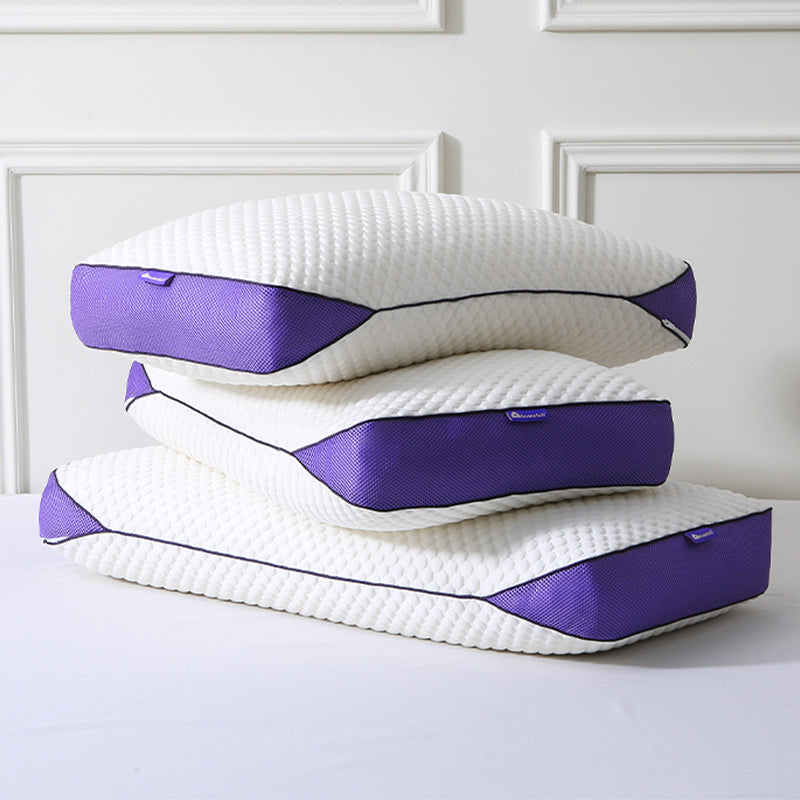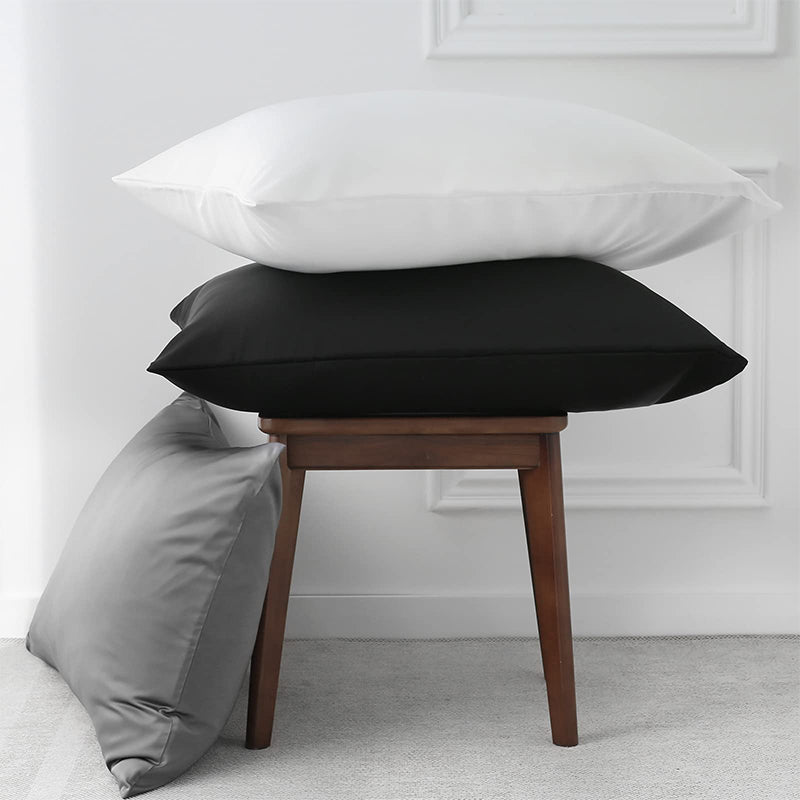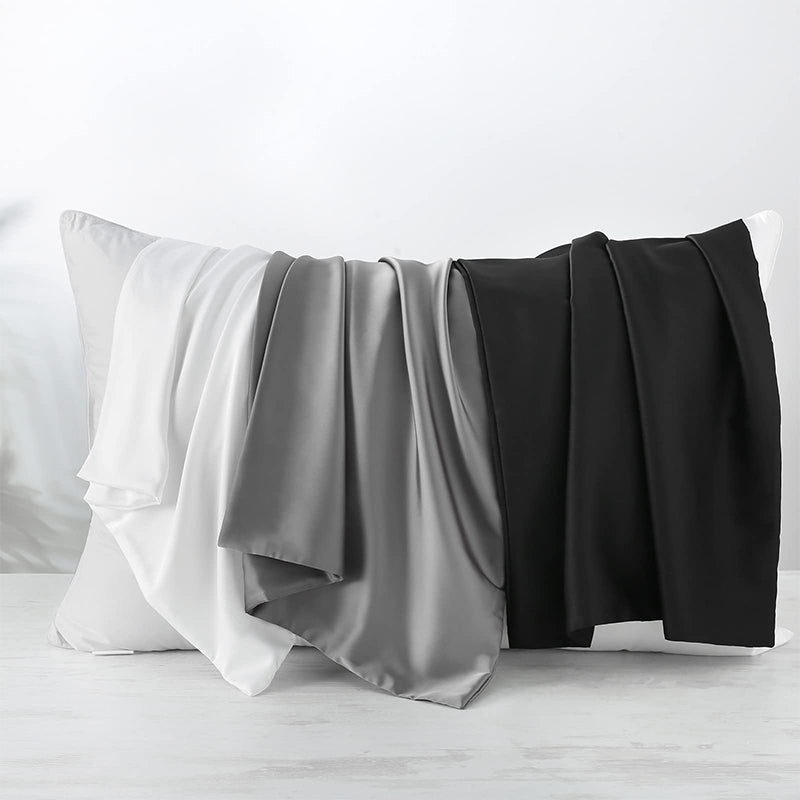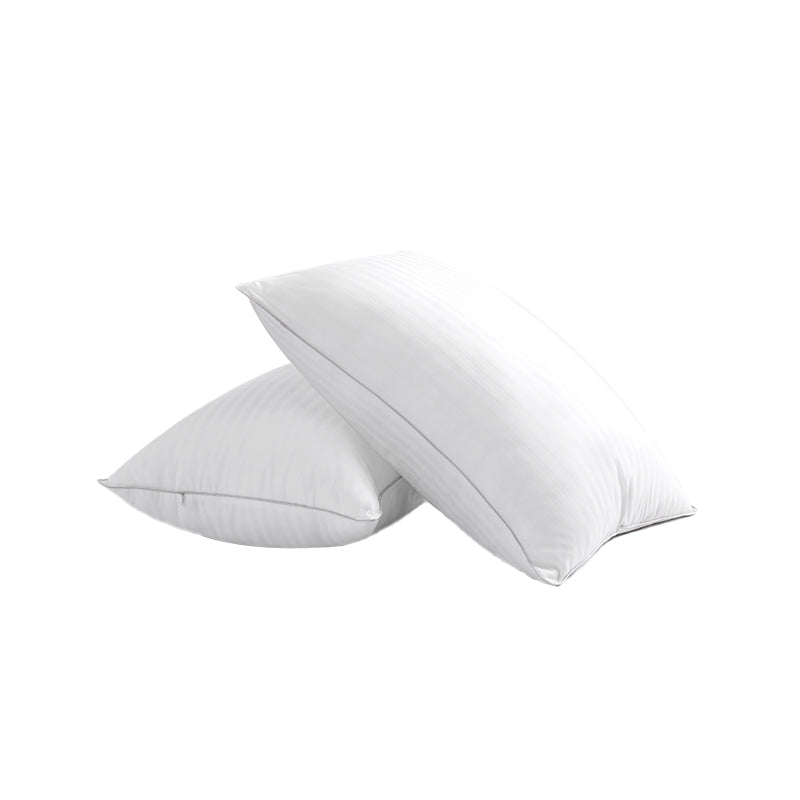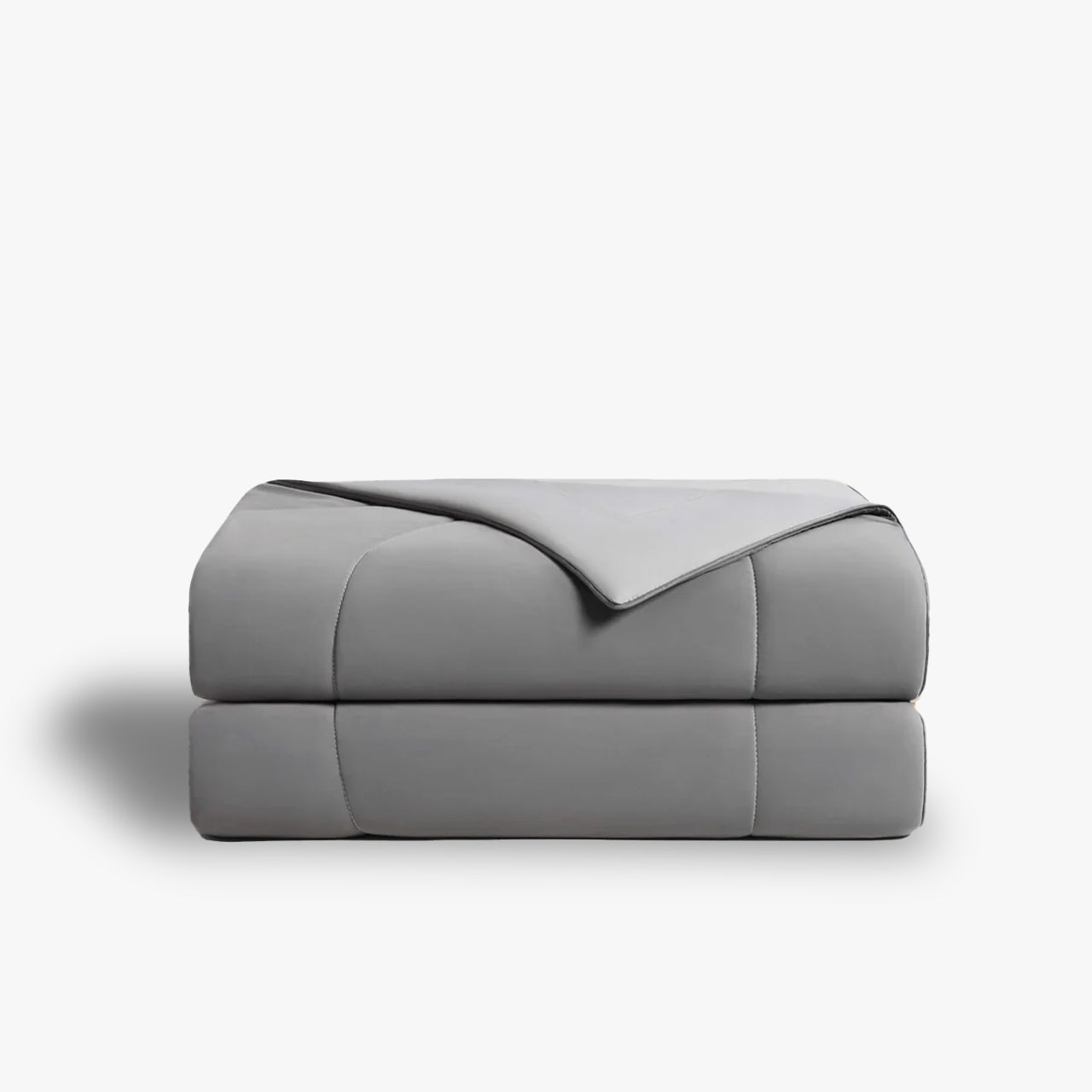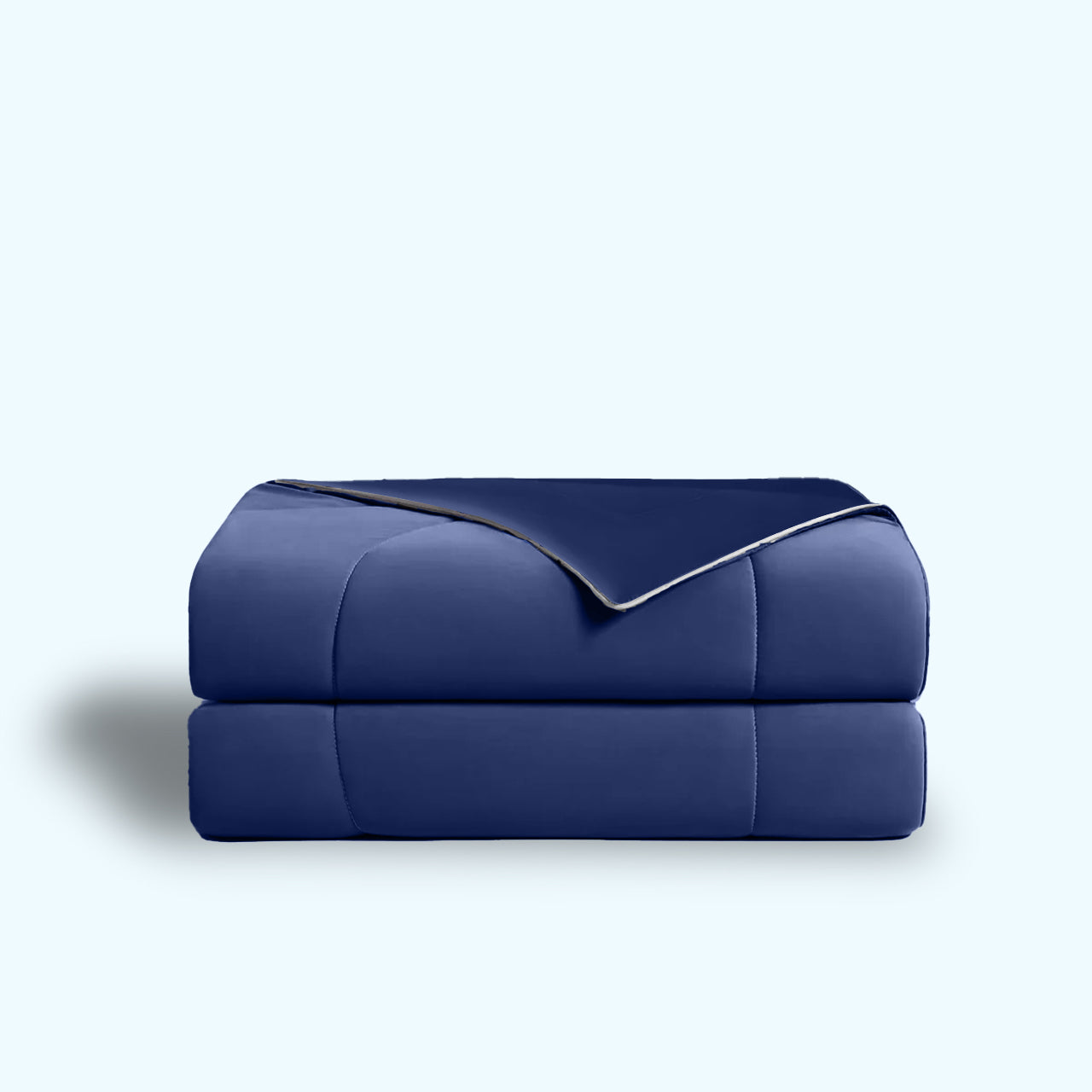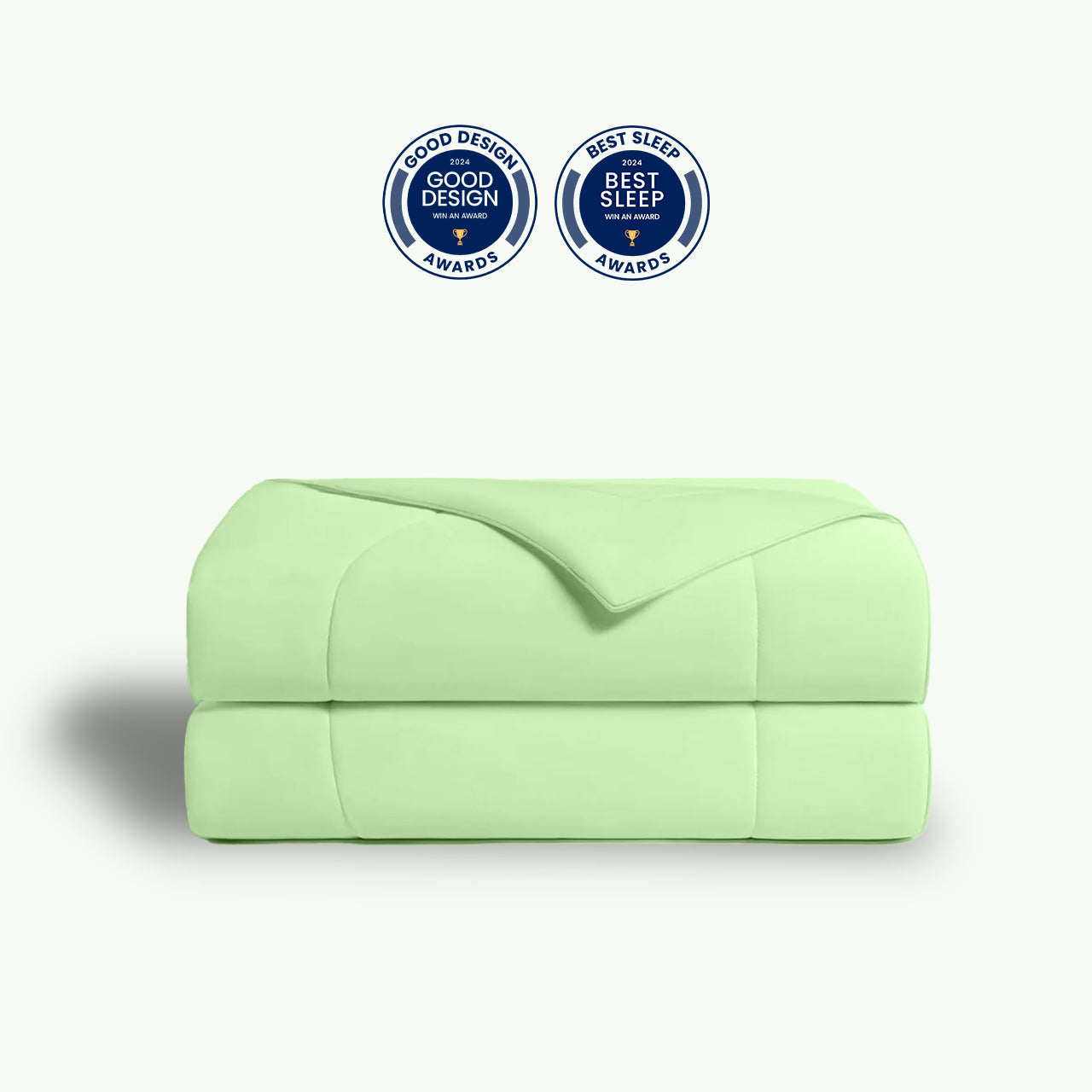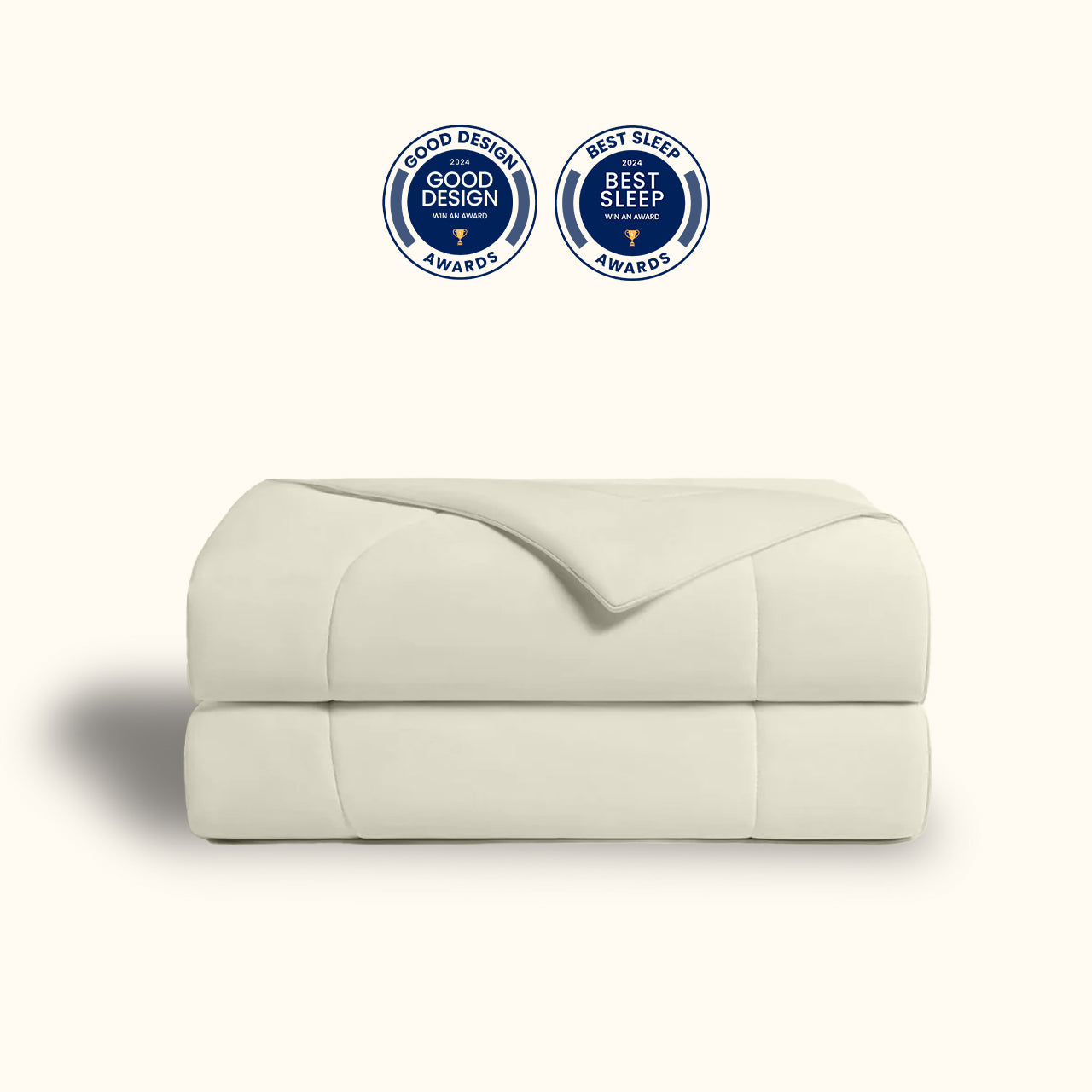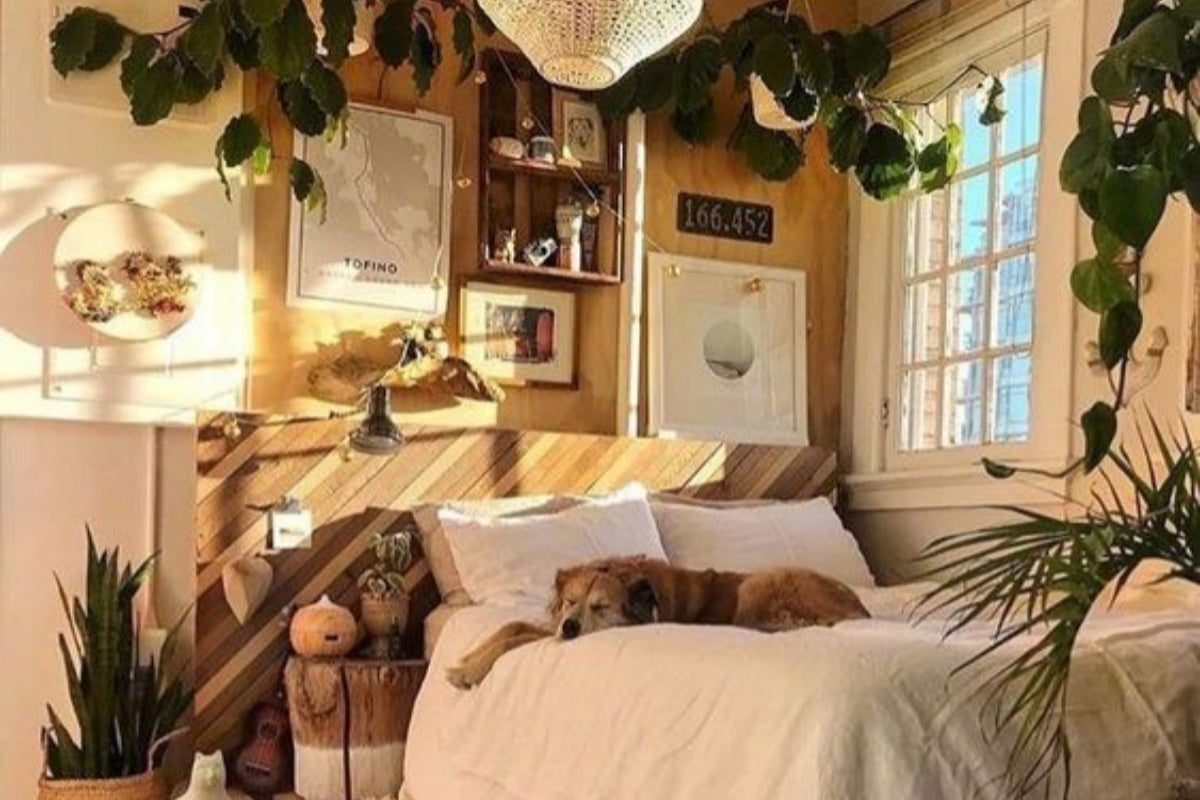Heading back to school? Don’t let a small dorm room and a hard bed ruin your rest. You don't have to settle for poor sleep just because you're in a shared space. With a few smart upgrades to your bedding and room setup, you can turn your tiny 3-square-meter nook into a personal sleep sanctuary that helps you drift off in no time

Make Your Space Feel Private and Cozy
Privacy is hard to come by in a shared dorm, but creating your own personal space can help you fall asleep faster.
• Install Blackout Curtains: A set of U-shaped track bed curtains in a dark color like gray or navy blue is a game-changer. They block out sunlight and hallway lights while creating a private little room just for you.
• Add Warm Lighting: Hang a string of warm-toned fairy lights inside your curtained space. Turning them on before bed creates a cozy, relaxing vibe that helps calm your mind. For those who are extra sensitive to light, a soft silk eye mask can block out any remaining light without putting pressure on your eyes.

Adjust Temperature and Air Quality for Better Sleep
Dorm rooms can be too hot, too cold, too dry, or too stuffy. The ideal sleep environment is around 18-22°C (65-72°F) with 50-60% humidity. Here’s how to get closer to that.
• Manage Humidity and Scents: In a dry room, a small USB humidifier can prevent a dry, stuffy nose. Add a few drops of lavender essential oil to help you relax.
• Stay Cool or Warm: In the summer, clip a small, portable fan to your bed frame for a gentle breeze. In the winter, a classic hot water bottle at your feet can keep you warm and cozy. For hot nights, a cooling mat can also help you stay comfortable.

Upgrade Your Bedding for Maximum Comfort
The standard-issue hard mattresses in dorms are a common sleep problem. Upgrading your bedding is the first and most important step to getting better rest.
• Add a Mattress Topper: A 5–10 cm memory foam or latex mattress topper can make a world of difference. It softens the hard surface, spreads your body weight evenly, and can help reduce back and hip pain. If you're on a tight budget, a high-density foam pad is a great affordable choice that will still make your bed much more comfortable.
• Choose the Right Pillow: Your pillow has a huge impact on your sleep quality. If you can, bring the down pillow you use at home. A good down pillow is light and soft, shaping to your head and neck to provide the perfect amount of support whether you sleep on your back or side. This is especially helpful for students who spend long hours studying, as it can ease neck strain and prevent you from waking up stiff. If your dorm is a bit damp, look for a down pillow with a water-repellent cover to keep it fresh.
• Pick Comforting Sheets and Comforters: You might not think about it, but your bedding's look and feel matter. Choosing simple, familiar patterns like solid colors or plaid—similar to what you have at home—can make a new space feel more familiar and reduce anxiety. For spring and fall, a lightweight but warm comforter, like one made from a down alternative or breathable microfiber, is perfect. It keeps you warm without causing you to overheat. In the summer, switch to a lighter summer quilt to stay cool and comfortable all night long.

Block Out Noise for a Peaceful Night
Living with others means dealing with different schedules and noise. A few simple tricks can help you get the quiet you need.
• Block Out Sound: High-quality noise-canceling earplugs (like those from 3M) can filter out most background noise. You can also use a white noise app on your phone. The steady sound of rain or a stream can mask sudden noises from roommates, making it easier to fall and stay asleep.
• Silence Your Bed: If you’re on the top bunk, wrap a towel around the joints of the bed frame to stop it from creaking when you move. If you’re on the bottom, place anti-vibration pads under the bed’s feet to reduce shaking.
• Talk to Your Roommates: Agree on a "lights out" or quiet time. Giving your roommates a friendly gift like earplugs or an eye mask can be a nice way to start the conversation about creating a sleep-friendly environment for everyone.

Wind Down with a Relaxing Bedtime Routine
A familiar bedtime routine sends a powerful signal to your brain that it’s time to wind down.
• Recreate Home Habits: If you used to drink warm milk before bed, keep some instant milk powder in your room. Use a flameless diffuser with the same scent you use at home to trigger a sense of comfort and security.
• Keep Comfort Items Nearby: Place family photos or a favorite stuffed animal by your bed. These familiar objects can provide a sense of calm and connection to home.
• Power Down an Hour Before Bed: Try to go to bed at the same time each night. About 30 minutes before, put away your phone and laptop. The blue light from screens can stop your body from producing melatonin, the hormone that helps you sleep. Read a book using a warm-light desk lamp instead.

Sleep Better Without Breaking the Bank
You don’t have to spend a lot to sleep better.
• DIY Comfort: Roll up an old sweater to use as a temporary neck pillow. Use large, black trash bags as temporary blackout curtains (just be sure to leave gaps for air to flow!).
• Smart Spending: If you can only afford one upgrade, make it a good pillow. Investing in the item that has the most direct contact with your body will give you the biggest improvement in sleep quality.
The goal is simple: make your small space feel relaxing and safe for your mind and body. By focusing on your senses—what you feel, smell, hear, and see—you can create an amazing sleep environment. With a supportive pillow, a cozy comforter, and a few simple adjustments, you can get sleep in your dorm that’s just as good as the sleep you get at home. After all, great sleep is the foundation for great grades and a happy, energetic life.


